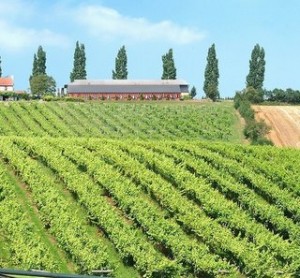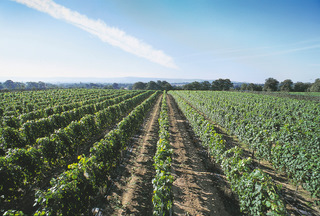English Wine
A version of this first appeared in Food Development magazine, June 2008.

Three Choirs Vineyard
The UK wine-growing industry is evolving at a rapid and exciting rate and is struggling to keep up with demand for home grown wines, despite the fact that the vineyard area has been forecast to reach 3,000 hectares within a decade.
The planted vineyard area is about 1,000 hectares, with nearly a quarter of that figure not yet in production, as it takes three to four years from planting to get the first crop off vines. Just five years ago, the total vineyard area was three quarters of its current size, giving an indication of the phenomenal rate of growth the industry has witnessed.
It is traditional method (wines made the same way as Champagne) sparklers that are leading the way, and while producers such as Nyetimber and Ridgeview already have an international reputation, others are chasing their tails. It is estimated that in five years’ time the UK will be producing about 3 million bottles of bubbly, which is ten times the current production.
Pinot noir is now the UK’s most widely planted grape variety, with chardonnay a close second. Together, these two traditional Champagne varieties account for fully one quarter of the vineyard area.
Such is the growing popularity for English wines, that upmarket supermarket Waitrose is planning next year to plant four to five hectares of vines on the 1,600 hectare farm it owns in Hampshire. The aim is to make sparkling wines, and, given the lead-time for the production of sparklers made in the same way as Champagne, it will be at least 2014 before the un-named fizz lands on the market. The farm already provides the supermarket with chickens eggs, milk, mushrooms, apples and pears, and is big enough to convert more hectares in the future, should the sparkling wine venture really take off.
At the risk of being heretical, for the UK home-grown wine industry, a little bit of global warming will be no bad thing. England and Wales are at the very northerly extreme of cool climate viticulture, but, such is the changing pattern of the global climate, an extra degree of warmth each year would mean that fruit ripens regularly in this country. English wines consultant Stephen Skelton MW said: “Ripening grapes in the UK terms is defined in terms of acidity, we have to get the acids ripe. And 2003, 2004, 2005, and 2006 were great for this. 2007 was an anomaly, It was the second warmest year on record, but the summer was awful,” which meant some of the acids were too high. A few hot days over 29° to 30°C is what we need to ripen acidity, which is not such a hard thing to achieve in the current climate.

Ridgeview
The resulting wines, both still and sparkling, are fresh and lively, with fragrant fruit and only moderate alcohol levels, 11.5% to 12.5%. These can be ideal for lunchtime quaffing wines, and wines by the glass. Indeed, Christine Parkinson, the group wine buyer for Hakkasan and Yauatcha restaurants said “We try to have something English by the glass in both our restaurants, such as Camel Valley Bacchus dry in Yauatcha and Plumpton Estate Rosé in Hakkasan.” Parkinson added: “I’d love to do more English wine, if I could taste more and find the right ones … English wines suit the cuisine at Hakkasan. We try every wine with the food, and generally speaking the aromatic wines with high acidity tend to go well with our cuisine.”
Chapel Down is one of the leading producers of English wines, and they make some of the best still wines from the third most planted variety, bacchus, especially in their single vineyard Lamberhurst and Tenterden labels. Their managing director, Frazer Thompson said: “We’ve planted a lot because we believe in future of English wines, especially sparkling, but we think there’s an English equivalent of Cloudy Bay, which is bacchus.” In fact the company recently bought 45 hectares of prime North Downs chalklands, which will be planted to chardonnay and pinot noir.
Thompson highlighted the growing trend for English wines to be on the wine list, saying places such as “Roast, Gary Rhodes, Ramsay and Conran restaurants have our wines on their lists”, adding “good modern sommeliers are looking for locally-sourced beef, vegetable from the gardens of England, and they’re also looking at wines. People shouldn’t be surprised to see [matches] such as bacchus with Whitstable oysters or Dover sole.”
The UK is also well placed to take advantage of the boom in pink wines. Plantings of red grapes are also on the increase, both for red wines and for pink wines. Chapel Down may have trademarked the ‘English Rose’ label for a still and sparkling pink wine, with a slightly more ruddy complexion than its human namesake, but there are plenty of ‘English Rosés’ (with accent) to be found, such as Stanlake Park‘s pinot blush or a’Beckett‘s Estate Rosé.
English wines will never be cheap. Production at the cool extreme of viticulture is more expensive than in warm sunny places where grapes ripen regularly, evenly, effortlessly. Thompson sums this up, saying “technically [English wine] is an excellently tasting product. People’s expectations of anything English should not be cheap. It should be premium in taste and feel, so English fizz will make you feel better than if you’re drinking champagne.”



